Measuring Sapphire Quality: Colour (C1)
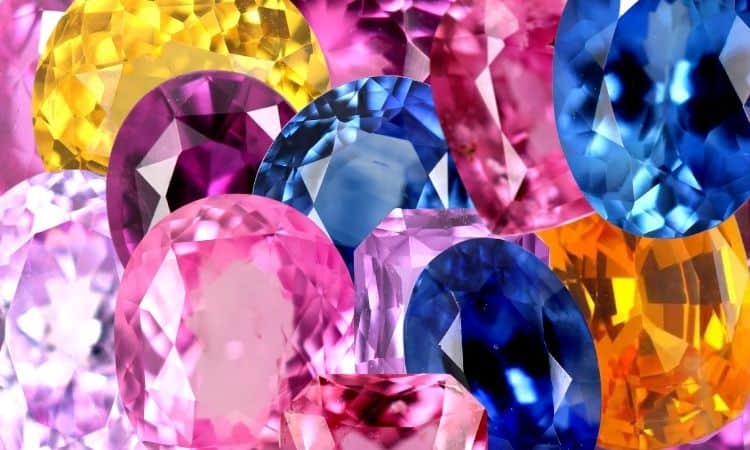
colour of sapphires
The colour is the most important quality of the sapphire. Sapphires have almost endless varieties of colours. Blue sapphires are the most popular colour of all sapphires. Due to the popularity, the demand for blue sapphires is higher than that of the other colours. Therefore, even all other qualities are the same, blue sapphire can value at a higher price than other sapphires. The only exception to this is the padparadscha sapphire which is very expensive due to its rarity.
Natural sapphire gemstones get their colour due to the presence of additional elements. Depending on the type of these elements, their amount, and their combination gives a unique colour to each and every sapphire. However, historically classified natural sapphires into a few broader categories such as blue sapphires, pink sapphires, yellow sapphires, white sapphires, and padparadscha sapphires. In recent times, with new sapphire mines discovered in different parts of the world and also as a means of facilitating gem trade and also due to emerging fashion trends, new classifications started emerging. Teal sapphires, peach sapphires, violet sapphires, orange sapphires are some of the newly introduced classifications.
Measuring the quality of sapphire colour
A single measurement is not sufficient enough to determine the quality of the colour of a sapphire. Therefore, we use a combination of several factors together. Let's discuss each of them.
The Colour Science of Sapphires
First, let's discuss some fundamental colour science behind sapphire colours. This will help us to build a very robust understanding and be very confident in determining the quality of the colour of a sapphire.
Hue
Hue is simply the nearest pure colour for a given sapphire. The Below colour wheel is showing pure hues. Usually, sapphires with pure hues are very rare. The next step is to see how and how much the colour of the sapphire deviates from its pure hue. Pure hues are the colours we get when we combine the three main colours in different proportions.

Saturation
When a pure hue is mixed with any other colour it loses saturation. Thus, saturation is how close or how better a given colour resembles its pure hue. At the maximum saturation, a colour is equal to its pure hue. At the minimum saturation, the colour can turn into grey, black, white, or any other colour which is getting mixed with the pure hue.
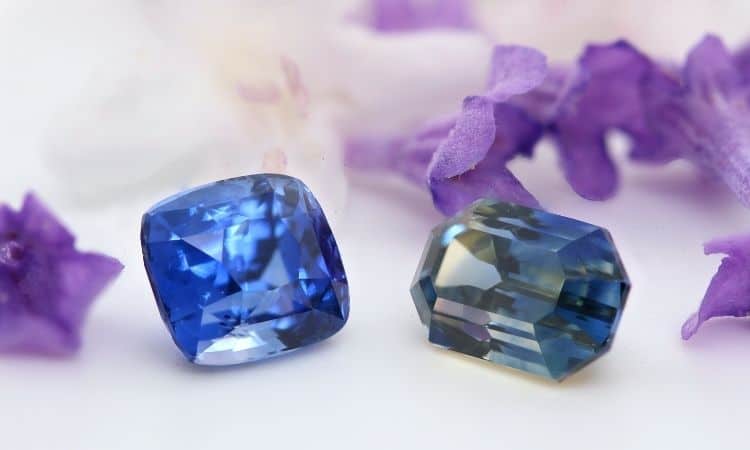
Blue sapphire with high saturation and a party sapphire with a low saturation (both from Ceylon)
Value
In simple terms, the value is a measure of how dark or light a colour is. The value of the colour changes when either grey, black, or white is added to a pure hue. When a pure hue is mixed with grey, we get different tones as shown in the below picture.

Now, we can pick any of those shades of blue and can add either white or black. Let's pick the pure blue hue itself and add black to it. When keeping adding black, the colour becomes more strong to a certain level and then start turning darker.
Sapphires of darker shades up to a certain level are considered as having the better colour. This is why people say 'the darker the sapphire, the better. But it is very important to understand that only the darker shades close to the pure hue are the better colours. A darker shape of a toned blue would also be dark but they are not considered the best colours. Thus simply thinking a dark sapphire is better than a light sapphire is an incorrect interpretation.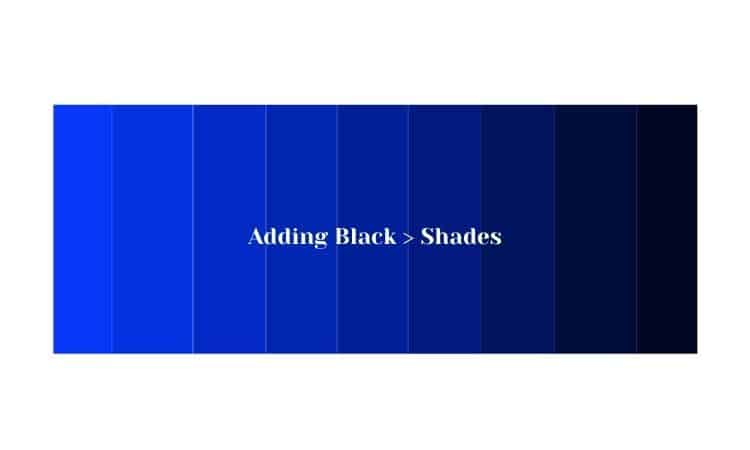
Let's add white to the pure blue hue. Now we are getting beautiful light colour tints. Again, as far as the saturation is high, every tint is a great choice of colour for a sapphire. However, different tints of a low saturated blue colour would give us light, but undesirable colours.
Now let's combine all three colour diagrams above and get a 2D colour chart for pure blue colour. The pure blue is marked in the palette with the letter 'A'. If you move horizontally to the right side from 'A', you get different tones of blue. If you more down, you get shades and if you move up, you get tints. Blue sapphires with a darker shade of pure blue such as 'C' are considered better in colour. Also highly saturated lighter shades such as 'E' are also considered better. But when we move to the right, we get greyish tones. Colours such as 'D', even though they are darker are not as good as 'C'. When we say that dark sapphires are better, we mean that the highly saturated dark shades such as 'C' and not the dark shades of low saturated hues such as 'D'.

The blue sapphire colour palette
The pure hues have the same saturation but they do not have the same value. For example, pure yellow has a low value than pure blue.
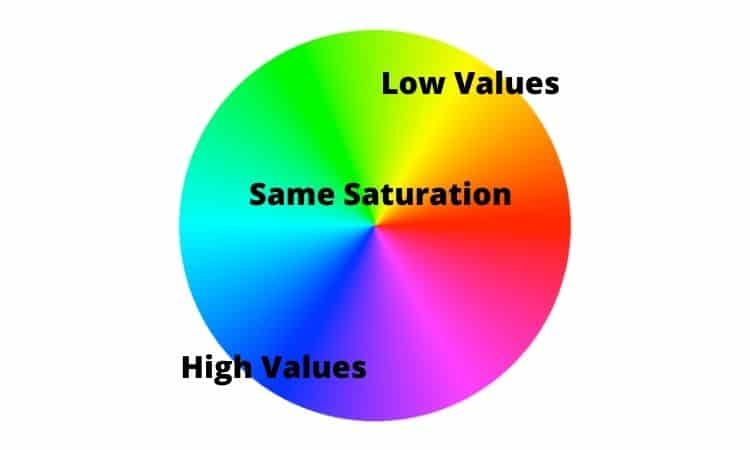
This means that we have many 100% saturated blue hues which are appealing equally to the human eye. As sapphires come in every colour, highly saturated sapphires can be found in any colour. However, highly saturated darker colours are rare in nature. Therefore, historically darker pure hues such as royal blue sapphires were considered the best colour for a sapphire. However, sapphire heat treatment technology changed this norm. Many sapphires can be heated and the colours can be darkened during the process. Therefore, when it comes to heated sapphires, the quality of the colour mainly depends on the high saturation disregard of whether they have higher or lower values (darker or lighter). However, when it comes to unheated natural sapphires, still dark blue hues such as royal blue are considered the best colour.
Determining the value of a colour can be judged by comparing it to the grayscale as shown below.
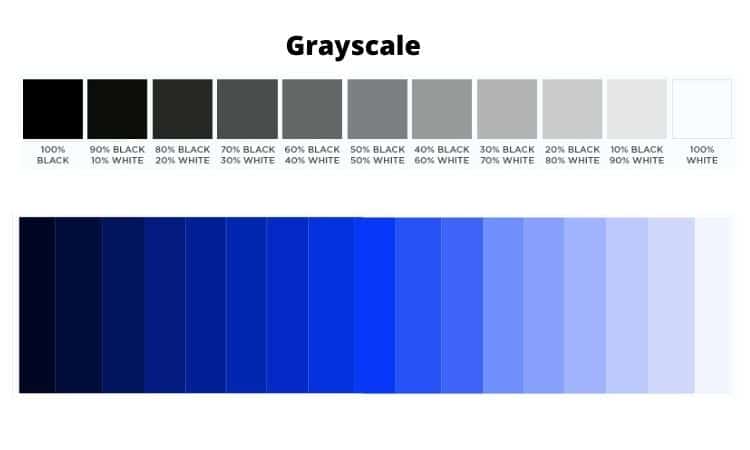
Measuring the quality of the Colour in the Sapphire Trade
You may have wondered whether gem merchants are referring to colour science when they judge the quality of the colour of a sapphire and the majority of them are not. The pure hues and their shades and tints are naturally appealing to the human eye. Therefore, with the experience of inspecting hundreds of sapphires and working with each other, they have built up a natural instinct to judge the colour quality of sapphires.
Also, in order to make this further easier, certain colours have been given special names. Royal blue and Cornflower blue are two good examples of this. Royal blue is a bit darker shade of the pure blue hue and Cornflower blue is a bit lighter tone of the same pure blue. Some laboratories have provided publications and reference materials which makes it easy for us to compare and decide whether a particular colour is observed in a sapphire gemstone. Please check the chart below to find some special colour protocols widely used in the sapphire trade.
Sometimes, a darker shade of a not so saturated blue colour can be identified as a royal blue. As we discussed above, the sapphires get their colours due to other elements present in the sapphire crystal. Because of this reason and also because of the light effects, we usually observe multiple colours in a sapphire. These colours are usually are shades and tints of different tones.
| Name | Explanation |
| Royal Blue | This is a bit darker shade of the pure blue hue. Usually associated with deep velvet blue colour. |
| Cornflower Blue | This is a bit lighter tint of the pure blue hue. As the name suggests, it is similar to the colour of the cornflower flower. |
| Padparadscha | Very rare and expensive colour variety. A mix of pink and orange. Associated with the colour of the lotus flower. |
| Padparadscha (Sunset Colour) | A variety of padparadscha with the more orangish less pinkish colour mix. |
| Padparadscha (Sunrise Colour) | A variety of padparadscha with the more pinkish less orangish colour mix. |
| Hot Pink | A bright pink colour. |
| Baby Pink | A very light pink colour. |
| Cognac and Champaign | Colours similar to Cognac and Champaign |
| Peach and Apricot | Colours similar to Peach and Apricot |
| Mekong sapphire | Colour similar to Mekong Whiskey |
Vividness - another key Sapphire Quality Factor
Sapphire certificates from many laboratories can have the modifier 'vivid' after the colour as in 'Pink Sapphire(Vivid)'. As the name suggests the vividness is how brilliant and live the colour is as opposed to having a dull appearance. Although we consider this as an aspect of the quality of the colour, the clarity of the sapphire and the quality of polish and cut also contributes to the vividness.
Lustre - yet another key Sapphire Quality Factor?
The terms vivid and lustre are very often used interchangeably. We can say a sapphire has a vivid lustre or a vivid colour. Rather than seeking definitions, it is better to understand the general meaning of these characteristics. A lustrous sapphire is also very live when it comes to reflecting the light. In a lustrous sapphire, you will get a more transparent and glassy look feel.
Undesirable Colour Qualities of Sapphires
So far we only discussed the colour itself and not about how it is distributed across the body of the sapphire. The way the colour is distributed or observed within the body of the sapphire gemstone can have negative effects on the quality of the sapphire. However, we need to keep in mind that many sapphires have these features in one way or another, clearly visible or hidden, big or small in size. The mere presence of colour zoning or colour bands does not make a sapphire a low quality but the overall impact of those on the appearance of the sapphire do.
Colour Zoning
Sometimes we can observe zones with a different colour than the most dominant colour of the sapphire gemstone. This characteristic is called zoning and it is a negative quality factor.
Colour Bands
Again, this is similar to the colour zoning but in this case, we observe different colour bands occurring within the body of the sapphire.
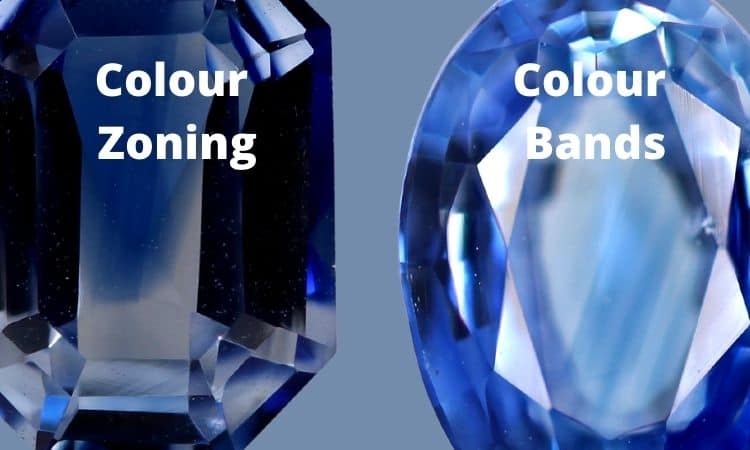
Sapphire Colour Enhancement
Yes, the colour of sapphire can be enhanced. This is usually done by heating the sapphire to very high temperatures and keeping it at that temperature for a long time. Different heating techniques such as high/low heating, short/long duration heating are utilised depending on the raw sapphire material being treated. In general, heating is done to make the colour darker. However, certain fancy yellow colour sapphire materials can be made colourless using the heating process.
In addition to changing the colour, heating helps to distribute the colour even throughout the body of the gemstone. Therefore, heated sapphires have better colour quality characteristics than pre-heated stones.
Determining the Colour Quality of Bi-Colour and Party Sapphires
Some sapphires can have multiple colours. When there are two easily distinguishable colours in a sapphire, we call them bi-colour sapphires. These colours should be very well distributed across the sapphire without forming zones or clusters.
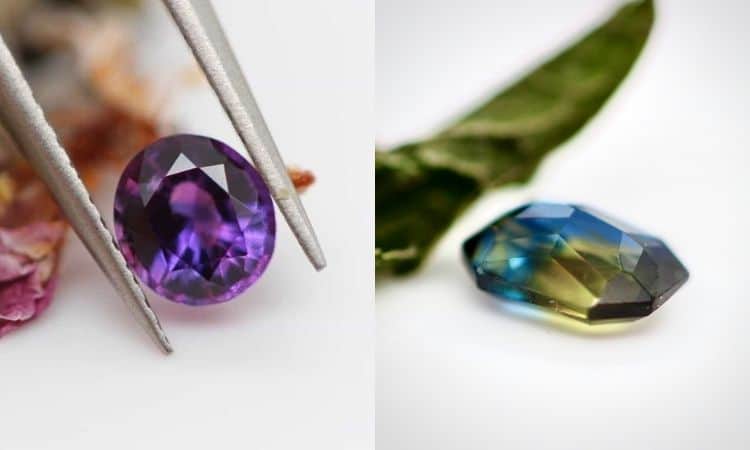
pink and violet bi-colour sapphire (on left) and a party sapphire (on right)
Party sapphires have more than two colours present within the gemstones. Australian sapphires have these characteristics better than sapphires found in other regions of the world.
The principles of measuring the quality of bi-colour and party sapphires are also the same. If the colours have a better saturation, the quality is good. Additionally, an even distribution of colours and whether the colours complement each other also can be a quality factor.
The colour quality of Colour changing Sapphires
Colour changing sapphires change their colours when exposed to different types of lights. In daylight they appear in one colour and in the fluorescent light, appear in another colour. Generally, these sapphires do not have well-saturated colours. However, the amount of colour change between the two lighting conditions is the main quality factor of their colours.